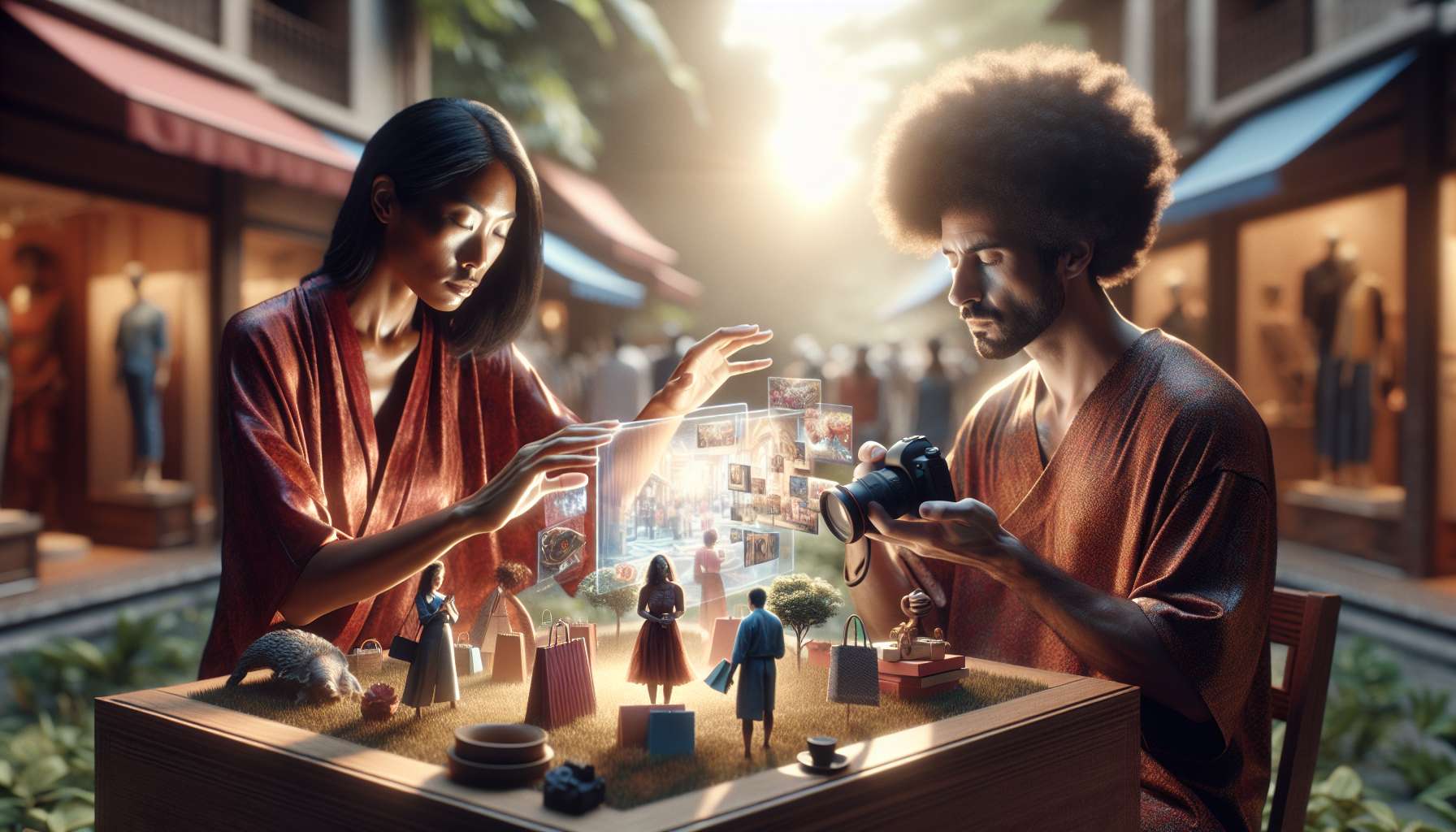Discover a New Way to Shop: The Impact of AR on Retail Tourism
Imagine strolling through the streets of a bustling city, exploring shops and boutiques, and discovering unique products from around the world. Now, add a touch of magic to this experience with augmented reality (AR). With AR-enhanced shopping, retail tourism is being transformed into an immersive and interactive adventure.
What is AR retail tourism?
AR retail tourism combines the power of augmented reality technology with the excitement of exploring new retail destinations. It allows shoppers to use their smartphones or AR glasses to overlay digital information, images, and animations onto the physical world, enhancing their shopping experience.
By simply pointing their devices at products, shoppers can access detailed information, customer reviews, and even virtual try-on experiences. They can also unlock exclusive discounts, personalized recommendations, and interactive games, making their shopping journey more engaging and enjoyable.
How is AR transforming retail tourism?
1. Virtual Storefronts: AR enables retailers to create virtual storefronts that appear in physical locations. These storefronts can showcase a wide range of products, allowing shoppers to browse and purchase items without the need for a physical store. This opens up new opportunities for retailers to reach customers in areas where they may not have a physical presence.
2. Personalized Experiences: AR technology can analyze shoppers’ preferences and behaviors to provide personalized recommendations. By understanding their unique tastes and interests, retailers can offer tailored suggestions, helping shoppers discover new products and brands that align with their individual style.
3. Virtual Try-On: Trying on clothes or accessories is an essential part of the shopping experience. AR allows shoppers to virtually try on products, eliminating the need for physical fitting rooms. By superimposing virtual garments onto their bodies, shoppers can see how different styles, colors, and sizes look on them, making it easier to make confident purchasing decisions.
4. Interactive Product Visualization: With AR, shoppers can visualize products in their own environment before making a purchase. For example, they can see how a piece of furniture would look in their living room or how a new car would fit in their garage. This interactive visualization helps shoppers make informed decisions and reduces the likelihood of returns or disappointments.
Real-world examples of AR retail tourism
Several retailers have already embraced AR-enhanced shopping to provide unique experiences to their customers:
- IKEA Place: IKEA’s AR app allows users to virtually place furniture in their homes to see how it fits and looks before making a purchase.
- Sephora Virtual Artist: Sephora’s AR app enables users to try on different makeup products virtually, helping them find the perfect shades and styles.
- Adidas GamePlan A: Adidas uses AR to create interactive in-store experiences, such as virtual basketball games, to engage and entertain shoppers.
The future of AR in retail tourism
The potential of AR in retail tourism is vast and exciting. As technology continues to advance, we can expect even more innovative applications:
- AR-powered navigation systems that guide shoppers through malls and shopping districts, highlighting promotions and personalized recommendations along the way.
- Virtual shopping assistants that provide real-time product information, answer questions, and offer personalized styling advice.
- AR-enabled social shopping experiences, where friends can virtually shop together, share recommendations, and get instant feedback.
AR is revolutionizing the way we shop and explore retail destinations. By embracing this technology, retailers can create unforgettable experiences for their customers, driving engagement, loyalty, and ultimately, business growth. So, why not step into the world of AR retail tourism and discover a new way to shop?





